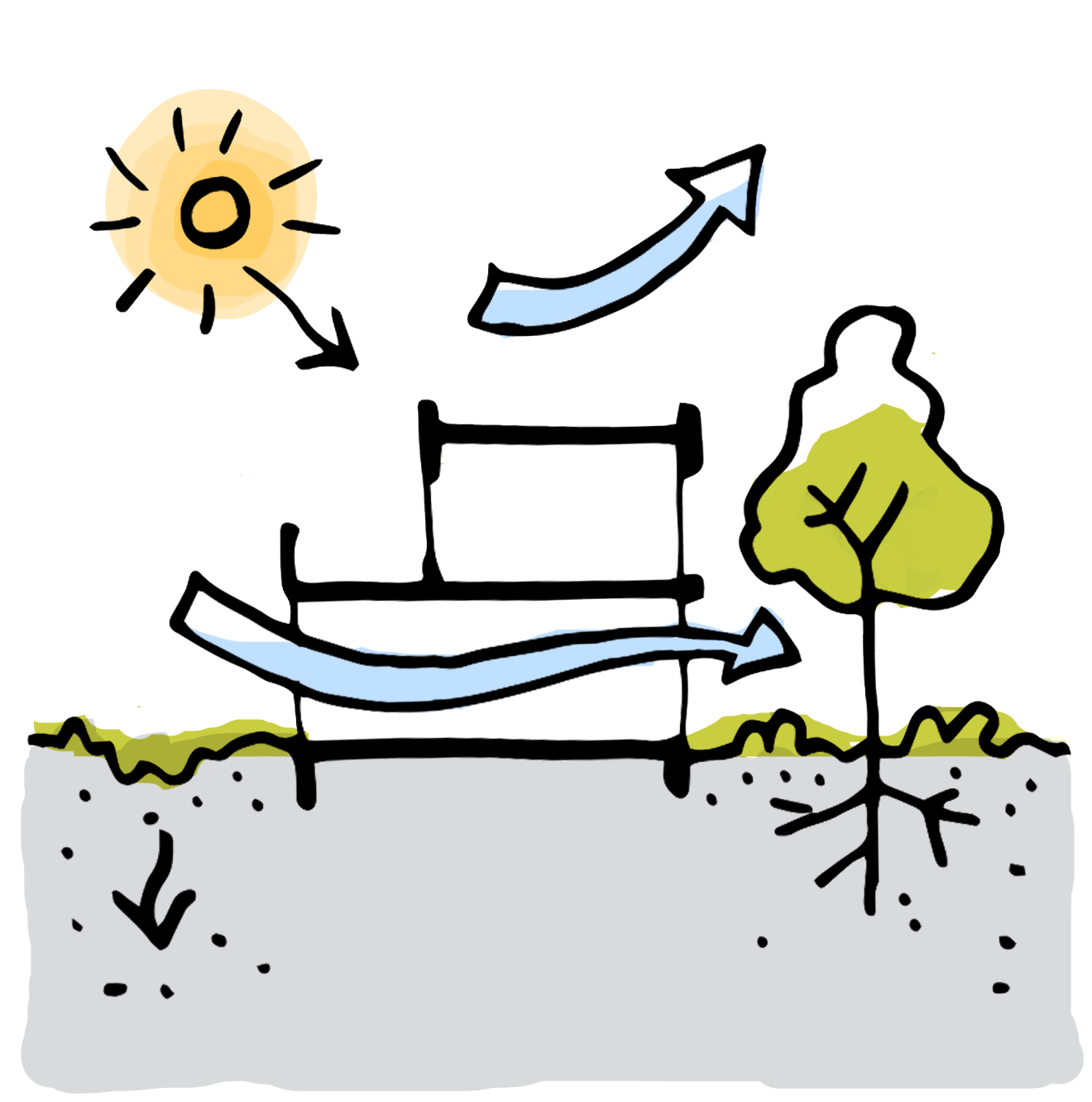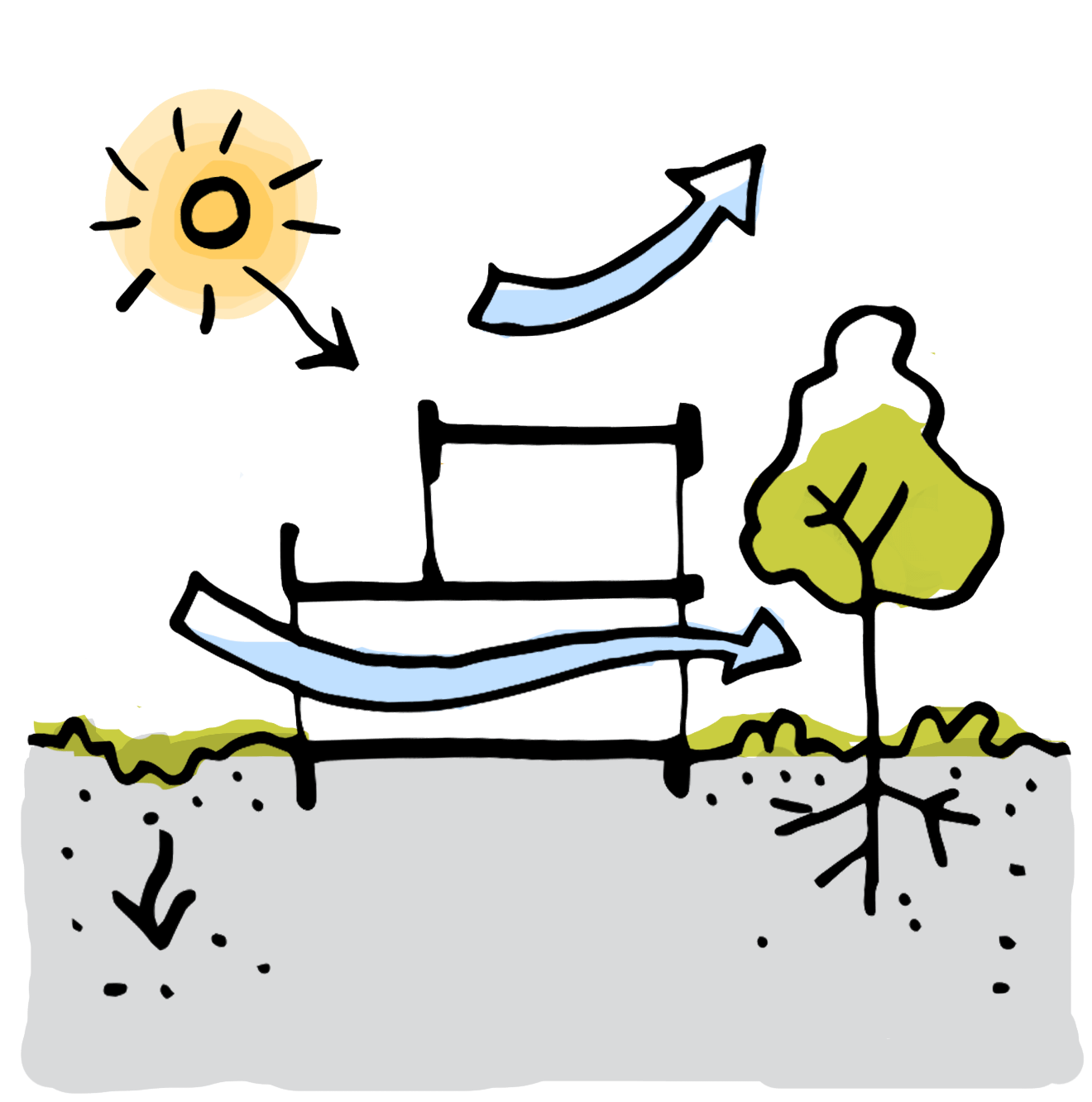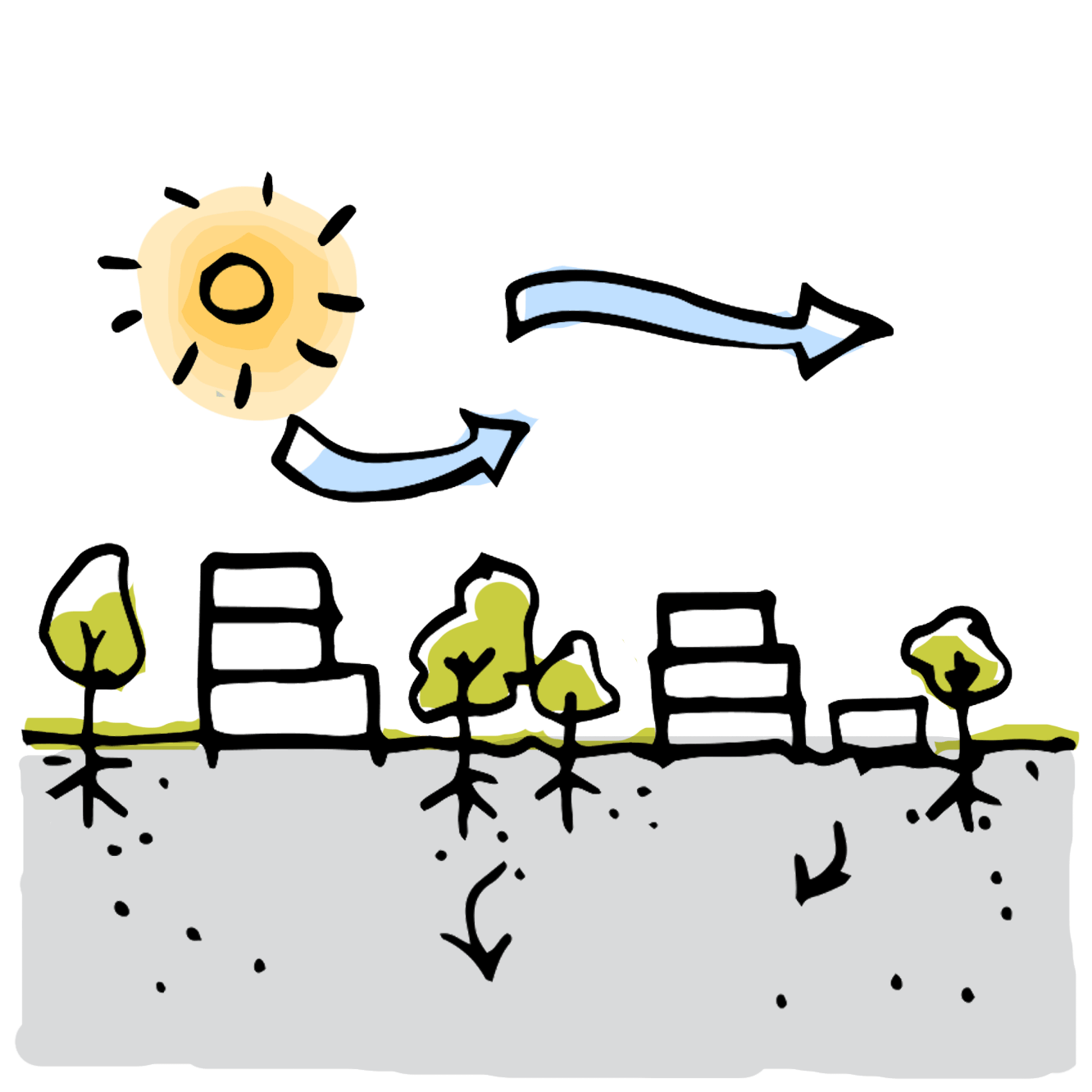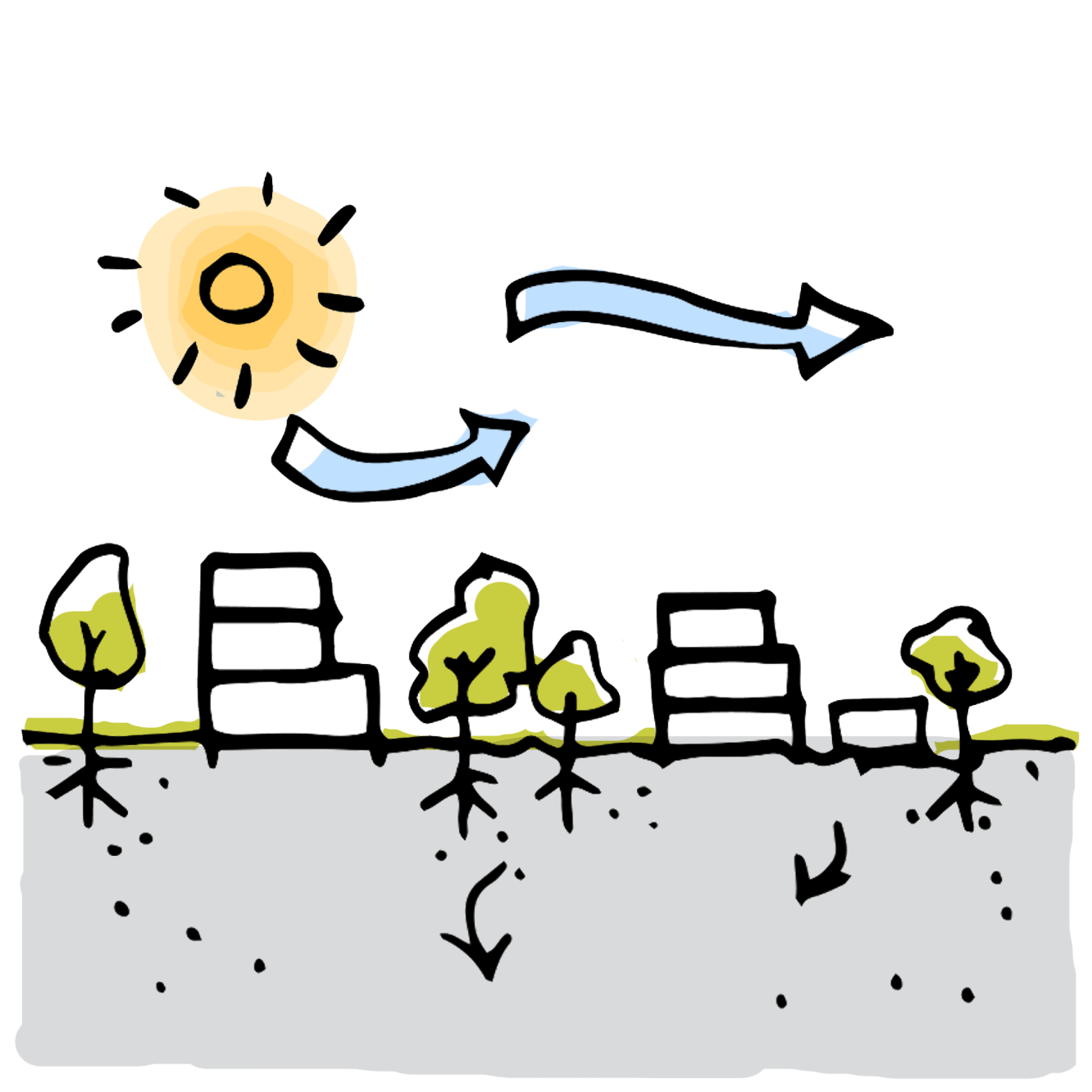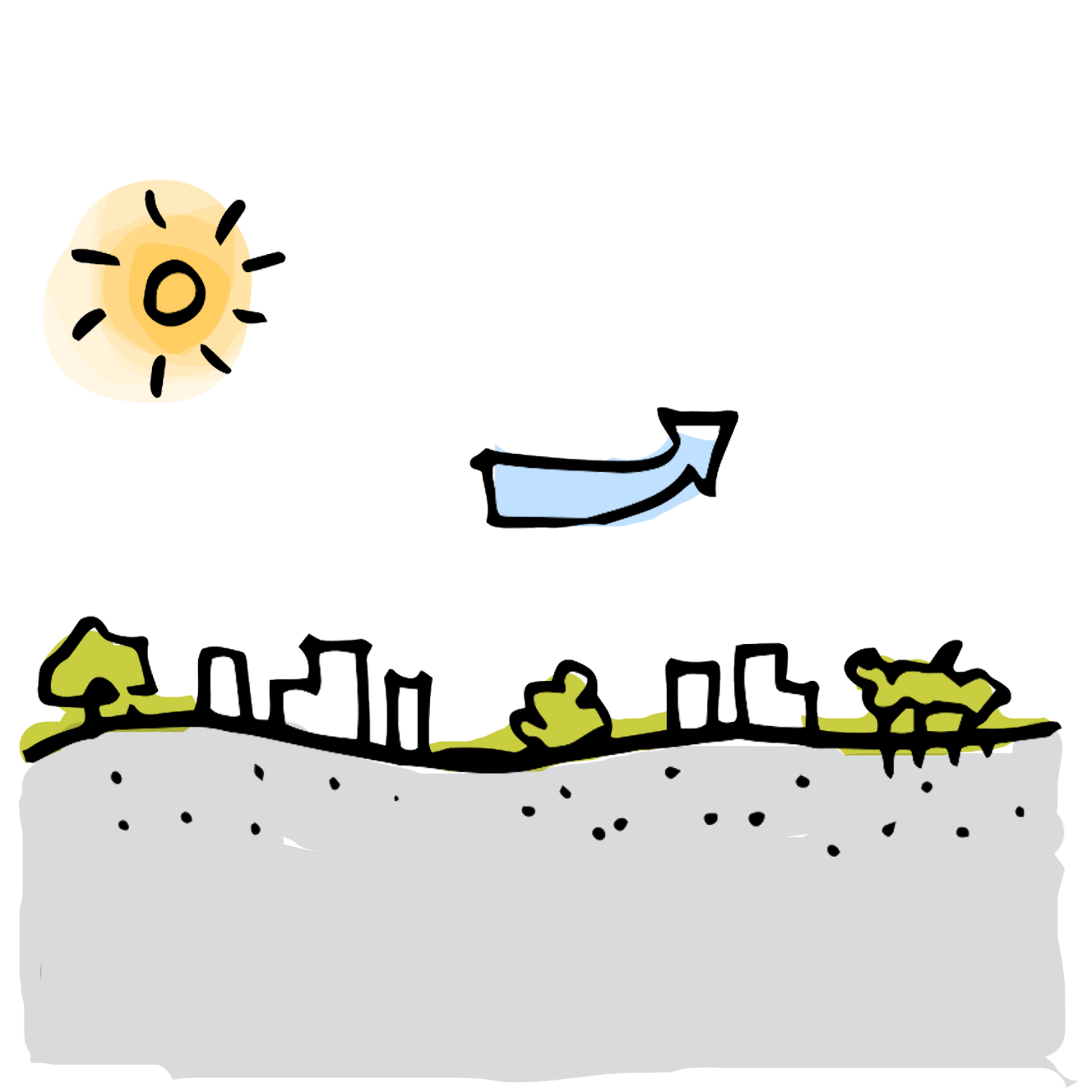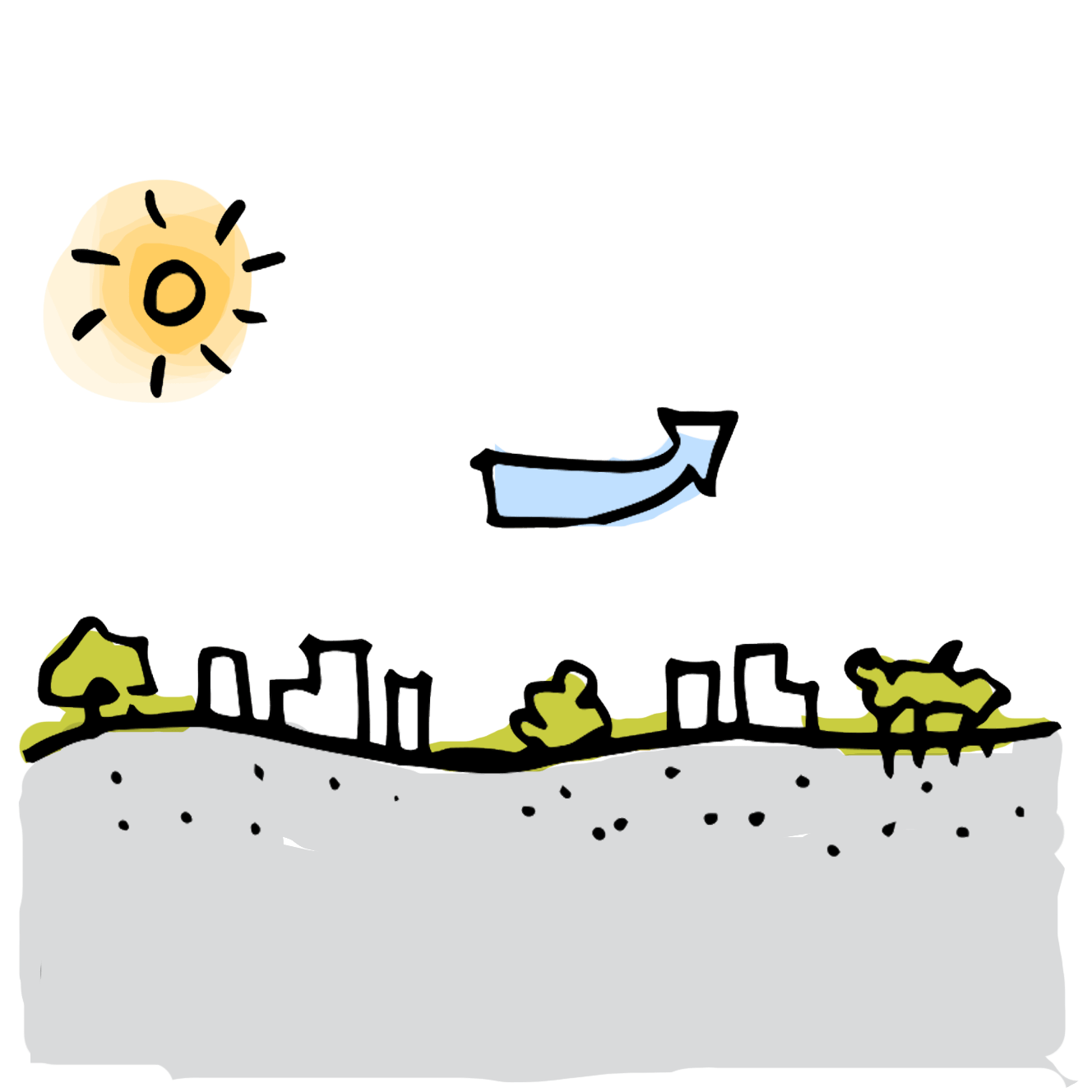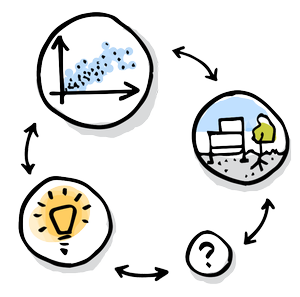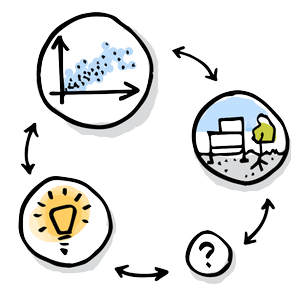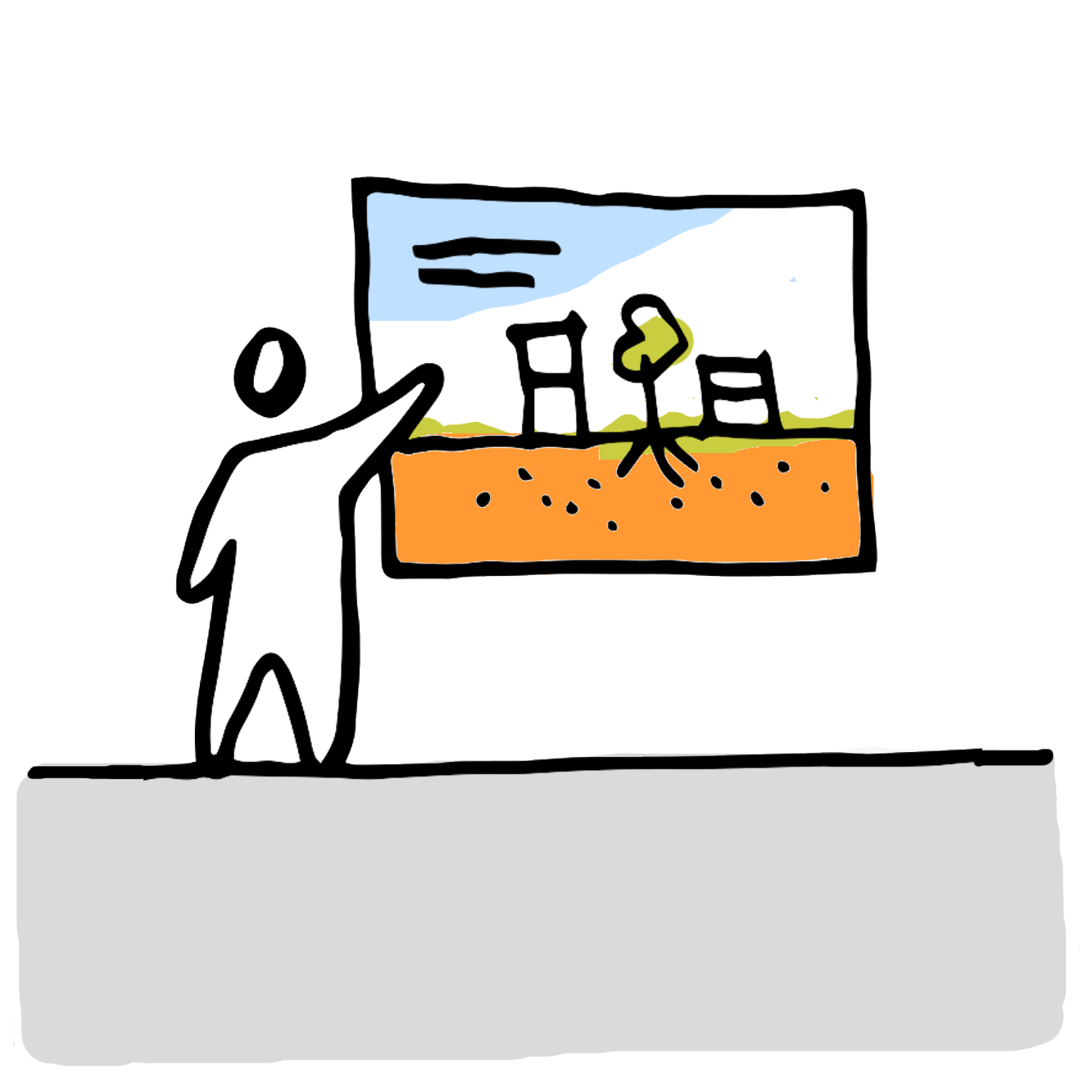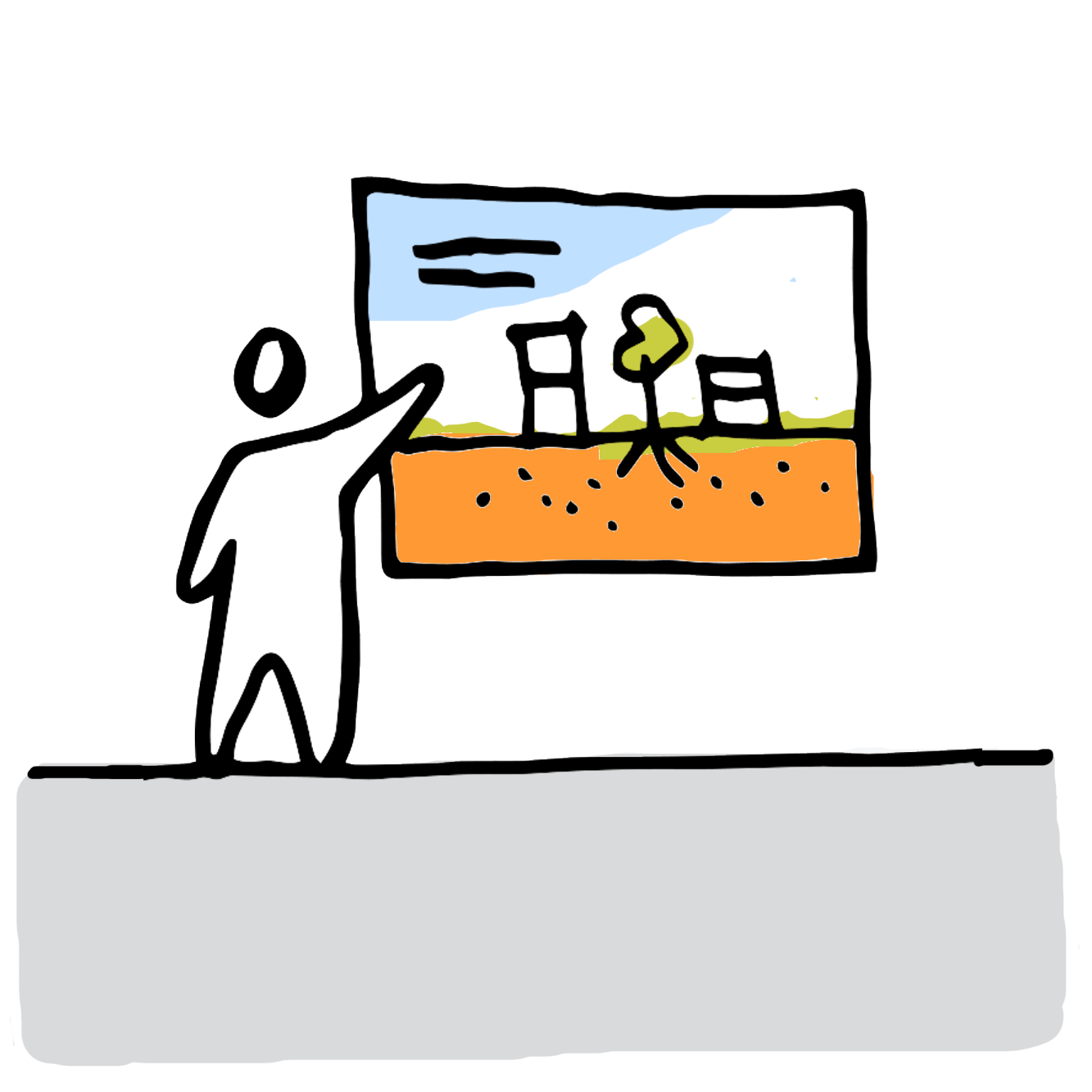Constructions & rénovations
Notre expertise de la qualité environnementale sur tous les types de bâtiments
En maîtrise d’œuvre ou en assistance à maîtrise d’ouvrage, nous intervenons sur tous les types de bâtiments : établissement scolaire et universitaire, crèche, logement, résidence étudiante, équipement sportif et de loisirs, équipement culturel, établissement de santé et social, bureau et zone d’activité…
- Une démarche basée sur la co-conception
Convaincus que la question environnementale est centrale dès les prémisses du projet, nous sommes forces de proposition et présents auprès de l’équipe à chaque étape de la conception. La participation aux réunions, les échanges itératifs avec tous les acteurs du projet nous permettent de spécifier notre approche et d’engager les bonnes études aux bons moments.
- Créer une synergie propice à l’innovation
Répondre aux besoins du projet en privilégiant la recherche de solutions inédites, la remise en question des habitudes et du cadre réglementaire, parfois en dehors des standards.
Nos missions intègrent les expertises suivantes :
- Diagnostic du site - préalable essentiel à tout projet durable - identification des atouts et des contraintes du site
- Etudes d’optimisation bioclimatique de la parcelle : simulations d’ensoleillement, végétalisation, gestion de l’eau, vent
- Etudes de conception du bâtiment : simulations thermiques dynamiques pour le confort d’été et la performance d’hiver, simulation de l’éclairage naturel, calcul de potentiel en énergies renouvelables
- Choix multicritère des choix constructifs, produits et systèmes : analyse de cycle de vie, calcul de l’empreinte carbone, ressources locales, issus du réemploi, santé …
- Chantier à faibles nuisances et vérification de la qualité de la mise en œuvre
- Suivi des performances, commissionnement, accompagnement des usagers
Nous mobilisons des outils pointus de modélisation du confort, de simulation thermique et aéraulique, nécessaires à la conception hors des standards de la règlementation thermique et environnementale.
Nos outils : Comfie Pléiades, TRNsys, TRNFlow, Design Builder/Energie Plus, Virtual Environment, SimScale
- Le confort en été dans une dimension thermique et aéraulique dans le bâtiment
Face aux enjeux de plus en plus prégnants liés au changement climatique, le confort d’été devient essentiel dans la conception des bâtiments. Nous optimisons les bâtiments pour éviter le recours aux systèmes de climatisation en déployant des approches alternatives du confort au-delà du simple paramètre de température.
- Dimensionnement de la ventilation naturelle
Nous concevons et dimensionnons des systèmes de ventilation naturelle pour assurer le renouvellement d’air des bâtiments. Cette technique hors des standards mobilise les différences de pressions naturelles de l’air afin d’assurer la qualité de l’air sans avoir recours à des ventilateurs, consommateurs d’électricité.
Bioclimatique tropicale
Présent sur la Réunion et Mayotte depuis une quinzaine d’année, TRIBU a pris sa part au remarquable laboratoire que constitue La Réunion en matière de bâtiments durables adaptés au climat tropical. De nombreux projets sont en cours études à Mayotte.
- Création d’ilot de fraicheur
L’approche bioclimatique en climat tropicale humide commence à l’échelle de la parcelle et même de l’urbanisme, par une forte végétalisation de l’environnement immédiat du bâtiment.
- Etude aéraulique des espaces extérieurs
La modélisation des vents complète le travail sur la végétalisation du site. Les simulations aéraulique extérieure permettent d’optimiser le confort thermique des usagers. Ventilation et rafraichissement naturel sont deux éléments clés de la bioclimatique tropicale.
Chantier à faibles nuisances et suivi de la qualité environnementale
- Chantier vert, gestion des déchets
Nous rédigeons une charte de chantier à faibles nuisances dans le but de définir les exigences, les moyens, les responsabilités et la méthodologie à mettre en place par les entreprises pour garantir le respect de l’environnement humain et naturel : gestion des bruits de chantier, des poussières, prévention des pollutions, santé de artisans, impact sur la biodiversité.
Nos actions sur un chantier à faibles nuisances :
En amont du chantier, nous dialoguons et accompagnons les entreprises pour la mise en œuvre de la charte de chantier à faibles nuisances.
En phase chantier, nous suivons et vérifions le respect de la charte chantier à faibles nuisances (ex : tri des déchets, suivi des consommations énergétiques, sensibilisation des compagnons, …).
Un bilan environnemental du chantier à faibles nuisances est réalisé à la réception du chantier.
Cette démarche de chantier à faibles nuisances s’applique aussi bien aux constructions neuves qu’aux opérations de réhabilitation et de déconstruction.
Nous sommes impliqués dans les phases chantiers pour garantir la bonne mise en œuvre de la qualité environnementale élaborée en phase de conception et pour accompagner les acteurs de la construction dans une logique respectueuse de la phase chantier.
- Qualité de mise en œuvre de la qualité environnementale
La qualité de mise en œuvre conditionne l’atteinte des performances environnementales et énergétiques définies lors de la phase de conception. Nous avons une méthodologie de suivi de chantier rigoureuse basée sur la validation des documents d’exécution (fiches techniques, notes de calculs, plans…), la conformité des matériaux et la qualité de mise en œuvre lors de visites de chantier régulières. Nous avons à notre disposition une base de données importante de références de matériaux, de détails et de solutions techniques et architecturales. Nous partageons aussi notre savoir-faire sur l’étanchéité à l’air, en sensibilisant les entreprises, en les assistant dans le repérage et la mise au point des détails techniques, et enfin en pilotant les essais de perméabilité à l’air. En fin de chantier, nous participons aux opérations préalables à la réception et à la mise en service du bâtiment afin de s’assurer du bon fonctionnement des installations. Nous accompagnons, informons et sensibilisons les usagers et gestionnaires sur le fonctionnement du bâtiment et l’entretien-maintenance par l’intermédiaire de réunions d’échanges et d’outils de communication (livret d’accueil, affiches, entretien et maintenance …).
Diagnostic ressources et réemploi
A l’heure où les ressources s’épuisent, il est nécessaire d’étudier les possibilités de réemploi des produits et matériaux afin de limiter l’énergie grise et limiter l’extraction des matières premières nécessaires à la réalisation des projets de construction et de rénovation. De la phase esquisse au chantier, TRIBU est attentif à la présence de gisement local pouvant servir au réemploi ou à la réutilisation. C’est dans une logique d’économie circulaire et de sobriété énergétique que TRIBU applique la méthodologie des 3R (Réemploi, Réutilisation et Recyclage). Nous rendons les pièces marchés ouvertes à l’intégration de matériaux de réemploi. TRIBU a par ailleurs participé à la réalisation du MOOC réemploi
- Diagnostic ressources
Cette démarche est abordée dans l’objectif de la réutilisation, réemploi des matériaux et des équipements afin de l’imiter l’impact du projet. Le diagnostic ressources se traduit par un inventaire et une caractérisation des produits, matériaux et équipements afin que les produits et matériaux soient réemployés sur site et intégrés dès les phases de conception du projet ou intégrer dans une filière de valorisation ex-situ.
- Intégration des ressources
Afin d’améliorer le réemploi ou la réutilisation, nous effectuons des visites de site minutieuses afin d’établir des préconisations pour réemployer des matériaux ou équipements in-site. Nous proposons également un cahier de dépose pour le réemploi ex-situ.
Ressources locales et matériaux biosourcés et géosourcés
Les matériaux géosourcés et biosourcés sont nombreux sur le territoire français : paille, bois, chanvre, ouate de cellulose, terre crue, pisé… Leur mise en œuvre limite les émissions de gaz à effet de serre et stocke du carbone toute leur vie et joue un rôle dans le confort thermique des usagers. Pour les intégrer au mieux dans les projets,
- Recherche d’acteurs, de gisements locaux afin d’intégrer au mieux les matériaux biosourcés et géosourcés
- Intégration des matériaux biosourcés et géosourcés dans la conception architecturale dès les phases concours
Certifications, labels
Les labels et les certifications ont l’objectif de garantir la qualité environnementale des bâtiments. Nous avons participé à la construction de la démarche HQE, mais nous nous sommes écartés de cette démarche trop « normalisante ».
Nous maitrisons les différentes solutions existantes en France et à l’international. De ce fait, nous conseillons les maitres d’ouvrages quant au choix le plus cohérent.
BBCA, Référentiels locaux : BDF, BDM, BDO, Outre mer, NF HQE Bâtiment durable, Label E+C-, Breeam, Leed, Well, Passivhaus, Bepos, Label biosourcé
Les projets associés
- Définir des ambitions environnementales partagées
Nous accompagnons le maître d’ouvrage dans le choix d’une stratégie de développement durable ambitieuse, adaptée au site, au programme et au budget de l’opération.
- Des exigences contextualisées et réalistes
Nous veillons à réaliser systématiquement d’une faisabilité énergétique et environnementale afin de fixer des objectifs cohérents avec le site, le climat et les contraintes économiques.
- Une approche pédagogique
Notre approche et nos documents portent une attention particulière à la sensibilisation des acteurs aux enjeux environnementaux.
Nos missions :
- Diagnostic de site
- Faisabilité : énergétique, environnementale et économique
- Rédaction du programme, cahier des charges
- Accompagnement à la sélection de l’équipe de maîtrise d’œuvre
- Suivi de la certification ou label le cas échéant
- Evaluation, suivi aux différentes phases de conception et de chantier
Les projets associés
- Un conseil personnalisé adapté au parc immobilier
Nous mettons en place de stratégies de développement durable au sein d’entreprises (état des lieux, priorités d’action, mise en place d’un cahier des charges…. Nous développons des outils opérationnels personnalisé aux modes de faire de l’opérateur.
- Une stratégie élaborée de participative
Nous sommes convaincus que l’engagement dans la démarche nécessite la montée en compétence de tous les opérateurs. Notre approche pédagogique tend à proposer une cadre suscitant la participation des acteurs.
Nos missions :
- Formation de l’équipe et acculturations aux enjeux
- Diagnostic du parc immobilier
- Identification des priorités de façon participative
- Définition d’un document cadre : référentiel, charte…
- Développement d’outil adaptés aux spécificités de la structure

